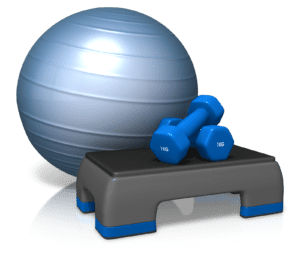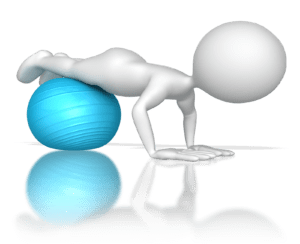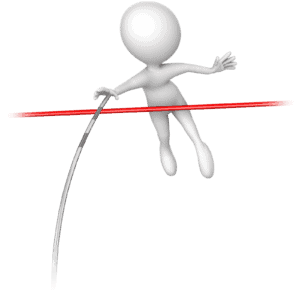Rehabilitation (secondary prevention)

In addition to primary prevention, secondary prevention, i.e. good rehabilitation and safe return to sport, is one of the most important areas for minimising the consequences of injuries, for example by reducing the risk of re-injury.
The purpose of rehabilitation is to ensure that the injured tissue can heal and / or recover optimally so that the athlete can return to their chosen activity. The aims of rehabilitation are to reduce pain, to restore normal range of movement in joints and muscles, to restore strength and endurance in the muscles (both in the injured area and in general) and to progressively increase the strength and tolerance of any damaged tissue.
Different tissues recover at different rates with a muscle, for example, potentially healing in 4 to 6 weeks while damage to growth plates can take several months, or in some cases years, to heal. Rehabilitation should be carried out in close collaboration with medical personnel such as a physiotherapist and, as required, a doctor.
Coaches and parents should not feel that they are responsible for rehabilitation, but they should be familiar with the principles of rehabilitation and the healing of various tissues.
Early attention and treatment of an injury is important in enabling good and quick rehabilitation. At this stage both short- and long-term rehabilitation goals should be made with the person, or people, managing the rehabilitation.
Rehabilitation of an injury follows a particular structure which is aimed at optimising the injured tissue’s healing process and ensuring it regains good function and tolerance to the stresses involved in sport. A major challenge in any rehabilitation process often occurs at the time the athlete is returning to sport.
Should an injured athlete exercise?
Providing an alternative to normal training for the person/people within the training group who are experiencing an injury or overload problem is important for faster recovery and to enable them to remain involved in the social group. Being injured is rarely the equivalent of resting, on the contrary, it challenges both coaches and athletes to find alternative solutions. Managing injuries can be resource-intensive, as one coach may need to be available to those athletes undertaking rehabilitative training. A well-executed strength training program means that you can, amongst other things, lay a solid foundation for returning faster from injury. Any rehabilitation exercises can even be done by healthy athletes
A tip for when an athlete is injured!
Encourage and assist the injured athlete to show their fellow athletes their rehabilitation program and then let the group try the exercises. You can also talk about the purposes of the various exercises.
Further reading: What happens in the body during an injury.
Return to sport after injury (“RTS”)
Sports coaches and athletes, as well as medical teams (doctors, physiotherapists, etc.), face multiple challenges when an athlete attempts to return to sport as the nature of such a return may differ depending on the sport (or, within athletics, between different events) and the type of injury sustained. The return to sport can be seen as a continuum which follows three steps (Ardern, 2016):
- Return to participation. In this step the athlete participates in physical activity, such as rehabilitation.
- Return to sport. In this step the athlete has completed their rehabilitation and begins participation in sport – but they do not compete or perform. This step requires clear planning of the progression of exercise and loading demands to enable a gradual build-up and full return to sport.
- Return to performance. In this step the athlete participates in their sport at the same level as prior to their injury, and has started to compete again. In order to compete again, the athlete should have been back in full training for at least 10 to 14 days, a time frame which helps reduce the risk of re-injury or flare-up.
Physical, psychological and social factors all influence the decision to return to sport. An example of an important physical factor is the progressive loading required to enable both optimal healing of any damaged tissue and adaptation of the tissue to the demands of sport. As far as possible, decisions regarding return to sport after injury or illness should be based on scientific evidence and best practice and be made via consultation of a team consisting of the athlete, the trainer/coach and the medical practitioner.
Each tissue structure (e.g. tendons, muscles and bones) has a slightly different healing time, with stress fractures of bones usually taking the longest to heal. In turn, each stress fracture’s healing time varies depending on which bone in the body is affected, with healing taking anywhere from a few months to a year.
Being pain free does not mean that the damaged tissue is ready for maximum loading!
What happens in the different stages of rehabilitation?
Here is an example of how a 12-week rehabilitation program can look for medial tibial stress syndrome (shin splints), from 0-12 weeks. Note: A rehabilitation program is always individually designed depending on the type of injury and the individual athlete and, therefore, it can vary greatly between individuals.
Phase 1: Early rehabilitation, 0 to 4 weeks
An initial goal of this phase is to relieve pain in the lower legs by significantly reducing or ceasing loading for 2 weeks. The loading can be reduced through activity modification. A rehabilitation program can be performed to aid circulation in the feet and lower legs. Alongside this alternative exercise can be performed using an exercise bike, doing water running and / or swimming in the pool, plus other strength training (e.g. upper body). It is also possible to include soft tissue treatment e.g. massage.
Rehab program;
- Circulation exercises using toe movement; sit with a towel under your toes and feed the towel under the foot with your toes.
- Bridges (pelvic lifts)
- Side-planks
- Core/Kinetic chain exercises (as necessary per individual)
Phase 2: Late rehabilitation, 4 to 8 weeks
The aim of this phase is to introduce muscle strength training and loading exercises for the lower leg. This can include progression of strength and functional training for core, gluteal, and lower leg muscles:
Rehab program;
- Sitting against the wall, heel raises (deep calf muscle) – 3 x 12 repetitions
- Bridge (pelvic lifts)
- Hip abduction (e.g. in side lying) – 3 x 12 repetitions
- Standing calf raises (superficial calf muscle) – 3 x 12 repetitions
- Squats and lunges (static)
Rehab Running;
- Warm up on a bicycle, ten minutes
- Jogging on softer ground (preferably outdoors). Run for a minute then walk for a minute. Repeat five times, followed by light running.
Ask the athlete to estimate how their legs feel on a scale of 0 to 10, where 0 is no pain at all and 10 is the worst possible pain (pain scale). 2 out of 10 is okay. Any pain should disappear by the next day. If the pain does not resolve by the next day then there is a risk for overloading and increased sensitivity.
Phase 3: Return to sport and performance, 8 to 12 weeks
The aim of this phase is to reduce the risk of re-injury or flare-up by continuing to gradually increase loading.
The return to regular athletics training should be made through gradual reintroduction of different types of exercise. For example, a return to running can incorporate co-ordination races and running technique training. New types of training can then be added systematically. For example, on a Monday the athlete can run coordination intervals, such as 4 x 60 meters with a walking rest in between, and the coach can ask the athlete to report how it feels (including using a pain scale). The athlete can then run the same coordination intervals on Thursday and add a single race with spikes. The program can then be gradually increased over the following weeks.
In order to compete, the athlete should have been back in regular training for about 10 to 14 days.
Question; What can we do to speed up healing?
There are currently no methods (treatments) that have been shown to heal injuries (tissues) markedly faster than a normal healing process. However, what often happens is that treatments provide pain relief and therefore an injury seems healed or better. But athletes can use any pain as a guide to show how much the injured area can tolerate, and this can reduce the risk of new overloadproblems! Read also about pain.
References and tips for further reading:
Ardern CL, Glasgow P, Schneiders A. 2016 Consensus statement on return to sport from the First World Congress in Sports Physical Therapy, Bern. Br J Sports Med. 2016 Jul;50(14):853-64.
Brukner P. Brukner & Khan’s Clinical Sports Medicine: Injuries, Vol 1, 5ed, McGraw- Hill Australia. 2017.
Rasmussen Barr E, Heijne A (red). Idrottsskada. Från prevention till säker återgång till idrott. Studentlitteratur. 2017.
Peterson L, Renström P. Sports Injuries. 4ed. Taylor and Francis. 2016.
Thomeé R, Swärd L, Karlsson J. Nya Motions- och idrottsskador och deras rehabilitering. SISU Idrottsböcker. 2011.
Certified physiotherapist. Medical coordinator Swedish Athletics. Associate Professor in Public Health/Health in Sport, with a primary research focus on health in sport.




